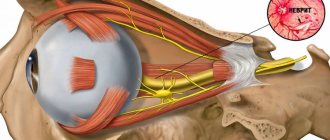Personality disorder or psychopathy is a disorder of a person’s mental activity, characterized by disharmony in the development of certain aspects of the personality. The first inconsistencies with generally accepted norms in behavior can be visible already at an early age. They become more noticeable during puberty, and over the years the symptoms become more pronounced.
Psychopathy is considered a kind of borderline state, bordering between health and disease. It is seen as a painful deviation from the norm, but is not a mental illness. Personality disorders have many types and forms, so treatment is selected individually, taking into account clinical characteristics.
Causes
According to statistics, about 12% of the population suffers from personality disorders. The reasons for their occurrence are ambiguous in most cases. The main predisposing factors to the development of mental disorders are of a genetic nature - the presence of mental illnesses, alcoholism, personality disorders in parents or close relatives.
In addition, the development of personality disorders can occur as a result of traumatic brain damage before the age of 3-4 years. Also, social factors can play a leading role in the emergence of this kind of pathology - inadequate upbringing of a child in the event of the loss of parents or in a family suffering from alcoholism. Violations arise against the background of inflicted psychological trauma - intimate abuse, manifestations of sadism, moral cruelty towards a child.
At first, the manifestations of the pathology have a clear picture, but with age, the symptoms have no specific boundaries and are reflected in all areas of life.
Psychotherapy and mixed personality disorder
Psychotherapy plays a leading role in treatment. True, this process is long and requires regularity. In most cases, patients achieved stable remission within 2-6 years, which lasted at least two years.
DBT (Dialectical Behavior Therapy) is a technique that was developed by Marsha Linehan in the 90s. It is aimed primarily at treating patients who have experienced psychological trauma and cannot recover from it. According to the doctor, pain cannot be prevented, but suffering can be prevented. Specialists help their patients develop a different line of thinking and behavior. This will help to avoid stressful situations in the future and prevent decompensation.
Psychotherapy, including family therapy, is aimed at changing interpersonal relationships between the patient and his family and friends. Treatment usually lasts about a year. It helps eliminate mistrust, manipulativeness, and arrogance of the patient. The doctor looks for the root of the patient’s problems and points them out to him. For patients with narcissism syndrome (narcissism and narcissism), which also refers to personality disorders, a three-year psychoanalysis is recommended.
Symptoms
Personality disorder is characterized by alternating periods of social compensation and decompensation.
Compensation is manifested by the individual’s temporary adaptation to society. During this period, a person does not have problems communicating with people around him, and personal deviations are hardly noticeable. During decompensation, pathological personality traits become pronounced, which contributes to a significant disruption of the adaptive capabilities of social interaction.
This period can take either a short period of time or last for a long time.
Personality disorders during exacerbation may be accompanied by symptoms such as:
- distortion of perception of reality;
- a feeling of emptiness and meaninglessness of existence;
- hypertrophied reaction to external stimuli;
- inability to establish relationships with other people;
- asociality;
- depression;
- feeling of uselessness, increased anxiety, aggression.
The diagnosis of “Personality disorder” can be made only if there is a triad of Gannushkin-Kerbikov criteria for psychopathy, which includes the totality of personality disorders, the severity of the pathology, as well as the relative stability of the individual’s condition.
Personality disorder: symptoms and signs
Manifestations of the disease affect all areas of the personality: primarily emotional and volitional, in addition, thinking, style of behavior and communication in society. There is no ability to flexibly adjust and adapt to changes in everyday life. Such people are unable to realistically perceive themselves and others and establish friendly relations with them. But these are only general symptoms; more specific clinical manifestations depend on the form of the disease.
Paranoid (paranoid) form
Characterized by constant suspicion, mistrust, and a tendency to shift responsibility for actions and decisions made. People with this type of disease often feel constantly offended, relegated to the background, and betrayed.
They are full of prejudices, but at the same time they are 100% convinced of their own objectivity and rationality. From the outside, their behavior seems devoid of emotion and lacks a sense of humor. All aspects related to power are highly valued, the rest is only contemptible.
Important! Sometimes this type of illness is a harbinger of the manifestation of schizophrenia, therefore, special attention is paid to the diagnostic examination and treatment of such patients at the Cordia clinic.
Schizoid type
The main feature of people with this type of illness is withdrawal and inability to establish long-term and emotional interpersonal relationships. They prefer work that is not associated with close communication or social interaction, while they are little concerned about the prestige or financial component of the profession, and easily tolerate monotonous activities. The ability to experience pleasure and experience both physical and emotional pain is often reduced. Paradoxically, coldness in communication is often combined with a reverent attitude towards animals and admiration for some inanimate objects (architectural structures, objects of art).
Characterized by an obsession with a healthy lifestyle (passion for specific and extraordinary diets, sports). But at the same time, the risk of developing alcoholism or drug addiction in attempts to have fun is quite high. Patients are indifferent to the opinions of others, incapable of empathy, there is no impulsiveness - only cold calculation.
Dissocial form of pathology
Typically, the desire to obtain pleasure and enjoyment, while avoiding any work and stress.
From an early age, they are characterized by deceit, running away from home, a specific, asocial circle of friends, theft, fights, drugs, and alcohol. Patients constantly manipulate others, resorting to blackmail, threats of suicide, and complaints of poor health.
They are not at all concerned about the consequences of their actions; their explanations look naive and infantile. Thinking disorders are usually absent; rather, on the contrary, the intellect is well developed.
Emotionally unstable type
- Impulsive (aggressive) personality disorder. Characterized by episodes of loss of self-control with attacks on others, damage to furniture, breaking dishes, etc. The level of aggression clearly does not correspond to the situation. The attack begins abruptly, ends very quickly, after which the person regrets what happened.
- Borderline (mixed) personality disorder. Symptoms combine manifestations of neurosis, psychosis, and schizophrenia. Typically there is a violation of the perception of one’s own identity, which provokes demonstrative attempts at suicide, a feverish search for communication with a demand for devotion and support.
Hysterical variant of the course of the disease
The main feature is attracting attention to oneself through defiant behavior, exaggerated display of emotions, manipulation (tears, reproaches, attacks of anger and irritability). Sexual attractiveness is emphasized separately, but impotence is typical for men with a similar illness, and anorgasmia is typical for women. They note self-centeredness, the desire to satisfy their own needs, and neglect of the needs of others.
Anankastny (obsessive-compulsive) form
The person is focused on correctness, ordering, regulation, neatness. He lacks a sense of humor, spontaneity in actions, initiative, and is indecisive. In interpersonal relationships, incapable of compromise, intolerant.
Anxious subtype
Patients have extremely low self-esteem, but they are constantly in search of new social contacts. However, they always need guarantees of a positive attitude and lack of criticism. Any deviation from the “ideal” they represent causes fear and is perceived as betrayal. Behavior is characterized by stiffness, unnaturalness, and excessive modesty.
Other types of personality disorders
- Dependent. The desire to find a person who could solve the patient’s problems and help him get out of difficult life situations is clearly expressed.
- Narcissistic, characterized by an exaggeration of one's own importance. Patients cannot tolerate criticism, responding to it with open aggression.
- Passive-aggressive, characterized by constant internal resistance to leadership and loved ones. Feeling internal tension and rage, patients are constantly irritated and dissatisfied, as they cannot fight back or express their dissatisfaction or desires.
- Association disorder. Against the background of acceleration of associative processes, a rapid change of thoughts of the patient and inhibition of the speech apparatus are observed. This leads to difficulties communicating with other people. It is difficult for a person to concentrate on one thing, it is difficult to express his own opinion on this or that issue, in a conversation he constantly jumps from topic to topic.
Does your relative have a mental disorder?
Refuses hospitalization? Are you afraid that he will harm himself and others? Call or request a free consultation.
URGENT CONSULTATION
The doctor will arrive within 1 hour . We'll take you to the hospital ourselves. Emergency hospitalization - around the clock!
Schizoid personality disorder
Persons suffering from this type of pathology are characterized by excessive isolation, emotional detachment, and sociopathic tendencies. They do not need contact with people, prefer a solitary lifestyle, and most often choose work with the possibility of minimal communication.
When interacting with others, such people experience internal discomfort, a feeling of uncertainty, tension, and therefore avoid establishing trusting relationships and do not have close friends.
Patients with this diagnosis show interest in everything unusual, have non-standard views on things and well-developed logical thinking. They are also characterized by a passion for various philosophical problems, ideas for improving life, and exact sciences.
People suffering from this type of disorder often achieve excellence in mathematics or theoretical physics, have musical talent, and also the ability to establish unexpected patterns.
Paranoid disorder
Personality disorder of the paranoid type is characterized by increased distrust, pathological suspicion, and an exaggerated perception of injustice towards one’s own person. Patients with this diagnosis tend to see negative intent in everything, constantly feel a threat from the outside, and attribute negative intentions to others.
A paranoid person is characterized by increased confidence in his own importance, does not recognize that others are right, and is convinced of his own infallibility. Such a person is extremely sensitive to criticism addressed to him and interprets any actions and words of others in a negative way.
In a state of decompensation, the clinical picture is complemented by pathological jealousy, a craving for constant disputes and proceedings, and aggression.
Dissocial disorder
Pathology is manifested by an indifferent attitude towards the feelings of others, irresponsible behavior, and disregard for social rules and responsibilities. Individuals with this diagnosis are characterized by behavioral non-compliance with social norms; they are characterized by open confrontation with the outside world and a criminal predisposition.
In childhood, the characteristic features of such individuals are increased conflict, lack of desire to learn, and opposition to any established rules. During puberty, persons suffering from this pathology show a tendency to theft, hooliganism, and frequent running away from home.
An adult with a dissocial disorder has no spiritual values, is unable to experience warm feelings, and blames everyone but himself. Such people assert themselves at the expense of the weak, do not feel pity, have sadistic tendencies, and are aggressive in bed.
Dissociative disorders
Dissociative identity disorder
The cause of development is intense or prolonged psychotraumatic exposure in childhood.
Critical factors are: early attachment disorder (lack of contact with the mother under the age of 2 years), violence, abandonment and neglect of the child. Dissociative disorder is characterized by the presence of multiple personalities in one person. Individuals can be of different genders, ages and nationalities, each with their own story. The transition from one subpersonality to another occurs suddenly; each subpersonality does not know about the existence of the others and has no idea what happened during its “absence.” The main goal of treating dissociative disorder is to unite different personalities - this approach allows for the normal existence of the patient, his safety and integration into society. Various psychotherapeutic techniques are used, including cognitive psychotherapy, hypnosis, psychodynamic therapy, and family psychotherapy. For concomitant depressive disorders and severe anxiety, antidepressants are prescribed. Dissociative identity disorder requires long-term therapy. The literature describes cases of successful integration even with a large number of subpersonalities, however, much is determined by the age of the patient, his ability and willingness to endure the stress associated with the unification of the “alter ego”, and other factors.
Dissociative amnesia
Dissociative amnesia is a fairly common disorder. It is a partial or complete loss of memory for events that caused severe psychological stress. At the same time, the patient is conscious, recognizes amnesia, is oriented in his own personality and retains memories of other events. This form of dissociative disorder is more often detected in young women who suffered during a natural disaster or were in the territory of military operations. Short-term episodes of dissociative amnesia often occur during the loss of loved ones and other tragic events.
Treatment is the creation of a favorable psychological atmosphere, psychotherapy, in some cases in combination with drug therapy. Lost memories can be restored using hypnosis, however, they can sometimes cause a deterioration in the condition of a patient with dissociative disorder, so the decision about the need to use this technique is made individually. To develop more adaptive ways of responding to traumatic situations, cognitive behavioral therapy and psychodynamic therapy are used; to facilitate the patient’s contact with his feelings and to safely express his experiences, various types of creative psychotherapy are used. The prognosis is favorable, and complete recovery is usually observed.
Dissociative fugue
Dissociative fugue is a dissociative disorder in which sufferers suddenly leave home, losing memories of their former identity. Some patients are confused, others create a new identity, sometimes very believable. The emergence of a new personality is accompanied by a change in behavior. With prolonged dissociative fugue, patients can get a job in another specialty and create new families. Subsequently, the previous personality returns, and the patient suffering from dissociative disorder finds himself in an unfamiliar place with a new, unknown life. Memories of existence are lost during the fugue period.
As a rule, psychiatrists and psychotherapists work with patients who have already experienced a return to their previous personality, since during the fugue period nothing bothers patients and they do not turn to specialists. Treatment of dissociative disorder is assistance in processing the traumatic situation that provoked the fugue. With a prolonged fugue, help may be required in adapting to their former life, since many patients have a hard time withstanding the changes that have occurred during their absence. The prognosis is favorable, and complete recovery is usually observed.
Depersonalization disorder
Depersonalization is a dissociative disorder manifested by a feeling of alienation of one’s own body or one’s own mental processes. It can be periodic or constant, accompanied by the effects of distortion of space and time, the perception of oneself as a robot or as a person living in dreams. It is as if the patient does not live, but observes his life from the outside, without being able to control it. Depersonalization is often combined with derealization - a feeling of unreality of the world around us.
There is a distinction between depersonalization in various mental disorders (schizophrenia, depression, bipolar affective disorder, panic disorder) and depersonalization-derealization syndrome, as an independent dissociative disorder caused by intolerable stress. The cause of the development of this syndrome can be natural disasters, accidents, violence, abuse in childhood, etc. It has been established that all types of depersonalization are associated with an increased level of anxiety, therefore tranquilizers and antidepressants are used in the treatment of this disorder. The prognosis for depersonalization-derealization syndrome is favorable; for symptomatic depersonalization, the condition is determined by the course of the underlying disease.
Trance and obsession
Trance and obsession are dissociative disorders accompanied by a temporary change in consciousness, a decrease in the ability to recognize one’s own personality and current events. Occurs among mediums and ministers of some cults. In everyday life, they can be observed in drivers, pilots and representatives of other professions associated with prolonged monotonous stress combined with high speeds and monotony of visual sensations. Trance states can cause plane crashes and car accidents.
For trance dissociative disorders caused by religious and occult rituals, psychotherapeutic treatment (gestalt therapy, psychoanalysis, rational psychotherapy) while taking tranquilizers may be required. During trances associated with the performance of professional duties, the main role is played by preventive measures: regular rest (if stopping is impossible - replacing the control of the vehicle with another driver or pilot), stops along the way and short sleep.
Other dissociative disorders
Dissociative convulsions are called pseudo-seizures, which can quite accurately imitate seizures in epilepsy, but are not accompanied by complete loss of consciousness, involuntary urination and tongue biting. Dissociative movement and sensation disorders are temporary loss of sensation or movement disturbances. Dissociative stupor is manifested by temporary complete or almost complete immobility and lack of response to external stimuli while maintaining consciousness. Treatment for all of these dissociative disorders is psychotherapy, sometimes in combination with drug therapy.
Hysterical disorder
This kind of disorder occurs in 2-3% of the population, most often in females. This type of mental disorder is characterized by theatrical manifestation of emotions, frequent mood swings, shallow perception of phenomena, and inconsistency in attachments. Such people love increased attention to their person, so they try in every possible way to achieve this.
Patients with hysterical disorder are overly concerned with their appearance, strive for ostentatious external brilliance, and need constant confirmation of their irresistibility.
When building personal relationships, individuals with this diagnosis put their own interests first and try to achieve their goals at the expense of others through manipulation. They are painfully aware of the indifferent attitude of others.
Obsessive-compulsive disorder
This type of disorder is characterized by increased caution, a tendency to doubt, a desire to keep everything under control, and obsessive thinking. People suffering from this type of personality disorder strive for perfection in everything, which greatly interferes with the completion of the task itself. They are overly conscientious, scrupulous, too pedantic and demanding of themselves and others.
Such patients are convinced that only their lifestyle and concepts are correct, and therefore demand that others conform to their ideas. Often, these individuals develop obsessive thoughts and peculiar rituals, expressed in the constant need to count objects, repeatedly check whether household appliances are turned off, whether the entrance doors are closed.
The financial side of life plays a special role for such people. They are overly frugal in spending, which they also demand from others; money is perceived as something that needs to be put aside in case of a global catastrophe.
During the period of compensation, individuals with this diagnosis are distinguished by reliability, pedantry, and correctness in communication. During decompensation, they are bothered by a growing feeling of anxiety, due to which the patient becomes irritable, remains in a gloomy state, and has hypochondriacal tendencies.
Personality disorder and driver's license
Are the concepts “mixed personality disorder” and “driving license” compatible? Indeed, sometimes such a diagnosis can prevent the patient from driving a car, but in this case everything is individual. The psychiatrist must determine which types of disorders predominate in the patient and what their severity is. Only on the basis of these factors will a specialist make the final “vertikt”. If the diagnosis was made years ago in the military, it makes sense to visit the doctor's office again. Mixed personality disorder and a driver's license sometimes don't interfere with each other at all.
Anxiety disorder
This type of pathology is accompanied by a constant feeling of anxiety, unpleasant premonitions, and low self-esteem. Such people try to avoid any contact with people, considering themselves socially inferior and personally unattractive. They are too shy, indecisive, and often lead a reclusive lifestyle.
Individuals with an anxiety disorder are pathologically afraid of criticism in their direction; they are hypersensitive to any negative assessments, and therefore try to avoid social and professional activities.
As a rule, people with this diagnosis adapt well to society, since in most cases the environment is sympathetic to the problem of such a person.
Narcissistic disorder
A clear manifestation of this kind of disorder occurs in adolescence. Patients experience an increased need for admiration from others, exaggerate their own importance in society, and do not accept critical judgments.
The main character traits of such individuals are complete conviction of their own greatness and the need to indulge all their whims. They are convinced of their superiority over other people, have an inflated opinion of their talents and achievements, and are absorbed in fantasies about their successes. They need increased attention and are focused exclusively on themselves.
Narcissistic individuals are clever exploiters and manipulators, thanks to which they achieve the fulfillment of their desires at the expense of others. Such people prefer a certain social circle that meets their high standards. They do not accept criticism and comparisons with “ordinary” people.
The inner world of these individuals is quite fragile and vulnerable, the emotional state is unstable and completely depends on external circumstances. Arrogance and arrogance are a protective mask that hides excessive sensitivity to rejection and criticism.
Dependent personality disorder
People suffering from this type of disorder are characterized by shifting responsibility for solving most life issues. The pathology is accompanied by a feeling of helplessness, pathological fear due to the inability to independently manage one’s own life.
As a rule, dependent people try to find a kind of patron with the help of whom they can at least somehow realize themselves in society. Such individuals need constant encouragement, advice, and approval of actions. Patients with this diagnosis are fearful, timid, unsure of their own abilities, unable to live without constant guidance.
The period of decompensation begins in the event of the loss of a patron, when life tasks must be performed independently, without prior agreement with him. The clinical picture during this period worsens significantly, which can lead to severe panic attacks without any particular reason.
The pathocharacterological properties that unite this group of personality disorders are impulsivity with a pronounced tendency to act without taking into account the consequences and lack of self-control, combined with mood instability and violent affective outbursts that arise at the slightest provocation. There are two types of this variant of personality disorder - impulsive and borderline.
Impulsive type
corresponds to
excitable psychopathy.
Psychopathy of this type, as E. Kraepelin points out, is characterized by unusually strong emotional excitability. Its initial manifestations are detected in preschool age. Children often scream and become angry. Any restrictions, prohibitions and punishments cause violent protest reactions in them with viciousness and aggression. In the lower grades, these are “difficult” children with excessive mobility, unbridled pranks, capriciousness and touchiness. Along with hot temper and irritability, they are characterized by cruelty and gloominess. They are vindictive and quarrelsome. An early-detected tendency to a gloomy mood is combined with periodic short-term (2-3 days) dysphoria. In communicating with peers, they claim leadership, try to command, establish their own rules, which often leads to conflicts. They are most often not interested in studying. They do not always stay in school or vocational school, and once they start working, they soon quit.
Formed psychopathy of the excitable type is accompanied by attacks of anger, rage, affective discharges, sometimes with an affectively narrowed consciousness and sharp motor agitation. In temperament (especially easily arising during periods of alcoholic excesses), excitable individuals are capable of committing rash, sometimes dangerous actions. In life, these are active, but incapable of long-term purposeful activity, unyielding, tough people, with vindictiveness, with the viscosity of affective reactions. Among them, there are often people with disinhibited drives, prone to perversions and sexual excesses.
The subsequent dynamics of excitable psychopathy, as shown by the work of V. A. Guryeva and V. Ya. Gindikin (1980), is heterogeneous. With a favorable course, psychopathic manifestations are stabilized and even relatively fully compensated, which is greatly facilitated by the positive influences of the environment and the necessary educational measures. Behavioral disorders in such cases are significantly smoothed out by the age of 30-40, and emotional excitability gradually decreases. However, a different dynamic is possible with a gradual increase in psychopathic characteristics. Chaotic life, inability to restrain impulses, increasing alcoholism, intolerance to any restrictions, and finally, a tendency to violent affective reactions serve in such cases as the causes of long-term disruption of social adaptation. In the most severe cases, acts of aggression and violence committed during affective outbursts lead to a collision with the law.
The borderline type has no direct analogues in the domestic taxonomy of psychopathy,
although according to some personality parameters it is comparable to the unstable type of psychopathy. Borderline personality disorder overlaps with other personality disorders - primarily hysterical, narcissistic, dissocial, and needs to be differentiated from schizotypal disorder, schizophrenia, anxiety-phobic and affective disorders (see description of the dynamics of borderline personality disorder).
A borderline personality is characterized by increased impressionability, affective lability, vividness of imagination, mobility of cognitive processes, constant “involvement” in events related to the sphere of current interests or hobbies, extreme sensitivity to obstacles on the path to self-realization and functioning at maximum capabilities. Difficulties in the sphere of interpersonal relationships, especially the situation of frustration, are also perceived more acutely. The reactions of such subjects even to trivial events can acquire an exaggerated, demonstrative character. As M. Smiedeberg (1959) emphasizes, they too often experience those feelings that are usually detected only in a situation of stress.
Initial pathocharacterological manifestations (emotional lability, suggestibility, tendency to fantasies, rapid change of hobbies, instability of relationships with peers) are detected already in adolescence. These children ignore school rules and parental restrictions. Despite their good intellectual capabilities, they perform poorly because they do not prepare for classes, are distracted in class, and reject any attempts to regulate their daily routine.
The distinctive properties of borderline personalities include lability of self-esteem, variability of ideas about both the surrounding reality and one’s own personality - a violation of self-identification, inconstancy of life attitudes, goals and plans, and the inability to resist the opinions of others. Accordingly, they are suggestible, susceptible to outside influences, easily adopt forms of behavior that are not approved by society, indulge in drunkenness, take stimulants, drugs, and can even acquire criminal experience and commit an offense (most often we are talking about petty fraud).
Borderline psychopaths easily become dependent on others, sometimes strangers. As they get closer, they quickly form a complex structure of relationships with excessive subordination, hatred or adoration, and the formation of overvalued attachments; the latter serve as a source of conflicts and suffering associated with the fear of rupture and future loneliness, and can be accompanied by suicidal blackmail.
The life path of borderline individuals seems very uneven, replete with unexpected turns in the social route and family status. Periods of relative calm are replaced by various kinds of collisions; transitions from one extreme to another are easy - this is sudden love, overcoming all obstacles, ending in an equally sudden break; and passion for a new business with objectively high professional success, and a sudden sharp change of place of work after a minor industrial conflict; this is also a passion for travel, leading to a change of residence and progression. However, despite all the shocks of life, these people do not lose their sanity; when they get into trouble, they are not as helpless as they might seem, and can find an acceptable way out of the situation at the right time. The zigzags of behavior inherent in most of them do not prevent fairly good adaptation. Easily adapting to new circumstances, they maintain their ability to work, find work, and rebuild their lives.
Within the dynamics of borderline personality disorder, phases that are erased and not accompanied by manifest affective symptoms are observed, unfolding mainly in the autopsychic sphere. Long periods of recovery with increased activity, a feeling of optimal intellectual functioning, heightened perception of the surrounding life can be replaced (most often in connection with psychogenic or somatic - pregnancy, childbirth, intercurrent illness - provocation) dysthymic phases. Complaints of decreased mental capabilities, a feeling of incompleteness of feelings and cognitive functions, and in more severe cases, the phenomena of mental anesthesia, come to the fore in the clinical picture in these cases.
Among other pathological reactions, judging by the descriptions of JG Gunderson, M. Singer (1965), Ch. Perry, G. Kjerman (1975), J. Modestine (1983), with borderline disorders, psychogenically provoked transient outbursts with a varied clinical picture are most often encountered, including, along with affective, dissociative hysterical, unsystematized delusional disorders. Although these psychopathological manifestations (“mini-psychoses”), as a rule, are quickly reduced, their nosological qualification is fraught with difficulties. First of all, it is necessary to exclude schizophrenia, affective and schizoaffective psychoses.
The criteria that reduce the validity of the diagnosis of an endogenous disease are such features of “mini-psychoses” as psychogenic provocation, transient nature, complete reversibility in the absence of a tendency to systematization and chronification.
Treatment
Treatment tactics depend on the causes of the pathology, the form and characteristics of the clinical picture. Only a psychiatrist can diagnose a personality disorder, and only a specialist should prescribe treatment measures. Self-prescribed therapy may not only not bring the desired results, but can also significantly aggravate the situation.
In a state of compensation, the patient does not need drug treatment. The basis of treatment measures in this case will be group or individual psychotherapy aimed at smoothing out pathological character traits. This method will allow the patient to learn how to respond correctly to certain life situations, which in turn will help him fully adapt to society.
During the period of decompensation, a person is considered disabled; if it lasts for a long period of time, there is a possibility of disability. Therefore, this condition requires immediate treatment. In this case, in addition to psychotherapeutic influences, drug therapy is prescribed to help relieve the symptomatic manifestations of the disorder.
To reduce anxiety, depression and other painful symptoms, selective serotonin reuptake inhibitors are usually prescribed. Anticonvulsants may be prescribed to control impulsivity and temper tantrums. To combat depersonalization and depression, drugs such as risperidone Risperdal are used.
The main goal of treatment is to eliminate the stressful state and isolate the patient from the external stimulus that caused the exacerbation of symptoms. This helps to reduce the severity of clinical manifestations - anxiety decreases, the feeling of hopelessness disappears, and depression is eliminated.
Medications in the treatment of mixed personality disorder
If organic personality disorder of mixed origin is usually treated with drugs, then the disease we are considering is treated with psychotherapy. Most psychiatrists are confident that drug treatment does not help patients because it is not aimed at changing the character that patients mainly need.
However, you should not give up medications so quickly - many of them can alleviate a person’s condition by eliminating certain symptoms, such as depression and anxiety. At the same time, medications must be prescribed with caution, because patients with personality disorders develop drug dependence very quickly.
Neuroleptics play a leading role in drug treatment - taking into account the symptoms, doctors prescribe drugs such as Haloperidol and its derivatives. It is this drug that is most popular among doctors for personality disorder, as it reduces manifestations of anger.
In addition, other medications are prescribed:
- Flupectinsol successfully copes with suicidal thoughts.
- Olazapine helps with affective instability and anger; paranoid symptoms and anxiety; has a beneficial effect on suicidal tendencies.
- Valproic acid is a mood stabilizer that successfully copes with depression and anger.
- Lamotrigine and Topiromate reduce impulsivity, anger, and anxiety.
- Amitriptine also treats depression.
In 2010, doctors were researching these drugs, but the long-term effect is unknown, as there is a risk of side effects. At the same time, the National Institute of Health in the UK released an article in 2009 that said that experts do not recommend prescribing medications if a mixed personality disorder occurs. But when treating concomitant diseases, drug therapy can give a positive result.
Personality disorder in children
In order to start treatment on time and prevent the pathological condition from worsening, you should be attentive to the psychological health of the child. As a rule, dependent and anxious personality disorders are the most common in childhood. Most often, the development of pathology is associated with a negative home or school environment, where moral as well as physical humiliation predominates.
The anxiety type of disorder is manifested by the following symptoms:
- low self-esteem;
- tendency to awkwardness;
- hypertrophied perception of problems;
- defensive behavior;
- reluctance to communicate with peers;
- increased anxiety.
If you have an addictive disorder, you may experience symptoms such as:
- victim behavior;
- excessive sensitivity to criticism;
- shifting responsibility to others;
- feeling of loneliness;
- reluctance to make decisions independently;
- lack of confidence in one's own strength;
- unstable emotional state.
If any symptoms appear, it is advisable to contact a qualified professional. Treatment for mental disorders in children is selected as carefully as possible. As a rule, therapeutic measures are based on the use of gentle drug therapy, long-term work with a psychologist, and constant monitoring by a psychiatrist.
Pathogenesis of BPD
The pathogenesis of the disease lies in incorrect or incompletely formed intrapersonal awareness of oneself, in other words, “self-identification.” Borderlines have difficulty understanding how they relate to major areas of life. They have problems with the concept of their opinions, interests, hobbies and their character as well. This is where the more common definition of the disorder – “borderline” – came from. In this aspect, it means maneuvering on the line between psychopathy and a stable state. The word “borderline” in this particular case means a precarious state between the norm and deviation, as if a person lives on the border between “mental illness” (psychosis) and “mental health”. That is why the slang name for patients of this type is “borderliners” (from the English expression “border line”, which literally translates as “border”).
In classical psychiatry, borderline personality disorder is also classified as a type of ego-syntonic disorder. Ego-syntonicity implies that the patient does not evaluate his condition as painful, is not critical of it, and calmly accepts deviations in behavior, without considering that they harm him in any way. Moreover, the patient seems to “defend” his symptom, preventing his own healing due to the difficulty in identifying his own “I”.
General prevention
Unfortunately, there is no specific standard for the prevention of various personality disorders, since each person is individual. However, it is still possible to prevent the development of mental disorders in a child. For this purpose, many mental health programs have been developed today to help parents and children solve family problems.
These types of programs are mainly educational in nature - they involve lectures and discussions aimed at understanding developmental psychology.
Adults suffering from a personality disorder should not neglect the services of a psychiatrist. If you are unable to control your emotions and reactions, it is advisable to consult with a competent specialist who will prescribe appropriate therapy.
Despite the fact that this kind of personality disorder is not a mental illness, during the period of decompensation a person is not able to independently overcome painful symptoms. Therefore, to avoid undesirable consequences, you should definitely seek medical help.
Now, in order. What to do about it?
Step one.
And the easiest. Because at this stage there are practically no changes. The first step is to determine whether the patient meets the general definition of a personality disorder. According to the idea of the new classification, this diagnosis can be made by both a psychiatrist and a doctor of the primary network, since the approach to the definition does not have serious differences from ICD-10. Using the following criteria, without going into categories, the specialist determines the presence of a personality disorder:
- the presence of progressive disturbances in the way a person thinks and feels about himself, others and the world around him, which manifests itself in inadequate ways of cognition, behavior, emotional experiences and reactions;
- the identified maladaptive patterns are relatively rigid and are associated with pronounced problems in psychosocial functioning, which is most noticeable in interpersonal relationships;
- the disorder manifests itself in a variety of interpersonal and social situations (i.e., is not limited to specific relationships or situations);
- the disorder is relatively stable over time and has a long duration. Most often, a personality disorder first appears in childhood and clearly manifests itself in adolescence.
If the disorder is first detected in adulthood, the qualifier “late onset” may be used. This qualifier should be used in cases where the history does not provide clear evidence of detectable disorders at an earlier age.
It is very important to determine the area of detected violations. Problems in interpersonal interaction in personality disorders are characterized by general disturbances in relationships with people that interfere with mutual understanding. This needs to be understood because most mental disorders are related in one way or another to social dysfunction. Thus, difficulty in completing tasks, organizing life's responsibilities, free time, maintaining adequate relationships at work, as well as lack of harmony in the family, are very different from the disorders associated with the inability to get along with the rest of the human race, which is exactly what is observed for personality disorders. A person whose life is turned upside down by a family feud does not necessarily have a personality disorder. A diagnosis should only be made if there is clear evidence of widespread deterioration in relationships with everyone around them.
Step two: determining the severity of RL.
Currently, personality disorders are an exclusively qualitative category, which often leads to the fact that two patients with the same diagnosis can be strikingly different from each other. ICD-11 offers 3 degrees of severity of personality changes (see Table 1), each of which can include one or several pathological signs. Ranking by severity takes into account that although LC is supposed to be a lifelong diagnosis, its severity may change over time.
Tab. 1 Degrees of severity of personality disorders in ICD-11
| Degree of expression | Main characteristics |
| Mild severity of personality disorders | - there are pronounced difficulties in constructing a significant part interpersonal relationships and in fulfilling expected professional and social roles; — the ability to perform certain social or professional roles and maintain some relationships is retained; - not associated with causing significant harm to oneself or others. |
| Average severity of personality disorders | - serious problems are observed in most interpersonal relationships and in fulfilling expected professional and social roles; - these problems are identified in a wide range of situations, most of which are compromised to some extent; – often involves a history or expected future harm to oneself or others, but NOT to a degree that would cause long-term harm or be life-threatening. |
| Severe severity of personality disorders | - serious problems in interpersonal functioning, affecting all areas of life; - the person's general social dysfunction becomes profound, and the ability and/or willingness to perform expected professional and social roles is absent or seriously compromised; – often involves a history and expectation of future serious harm to oneself or others, to a degree that may cause long-term harm or be life-threatening. |
In addition, a subthreshold level of disorder is identified, which corresponds to the familiar concept of “personality accentuations” and is designated as “personality difficulty” (complex/difficult personality) (see Table 2). “Personality difficulty” will not be a diagnosis, and, in its essence, will correspond to the existing code Z in ICD-10. Registration of accentuations is necessary, since its presence increases the risk of the need for medical intervention in certain conditions, for example, under stress or in certain conditions environment. At the same time, it is necessary to understand that some cases of mild personality disorders may not require specialist supervision. According to modern epidemiological estimates, 1 out of 14 people in the population suffers from a personality disorder, and treatment of each, firstly, is not necessary, and secondly, incurs huge economic costs. The presence of ranking by severity will allow a more professional approach to identifying indications for therapeutic interventions.
Tab. 2Dimensional system for classifying personality disorders by severity.
| Degree of expression | Name | Main characteristics |
| 0 | Lack of radar | No personality disorders |
| 1 | Personality difficulty (accentuation) | There are some disorders that appear in a limited range of situations, but not all the time |
| 2 | Personality disorder | The presence of a clearly expressed personality disorder manifested in a wide range of situations |
| 3 | Integrated radar | The presence of pronounced problems affecting several domains and manifested in all situations |
| 4 | Severe RL | Presence of significant problems affecting (usually) multiple domains and occurring in all situations resulting in significant risk to self or others |
The difficult-to-understand comorbidity of different types of personality disorder has been eliminated, which may lead to a decrease in the number of patients with unspecified/mixed personality disorder. The designation of “complex personality disorder” reflects a universal finding in research on this topic that as the problem becomes more pronounced, the diagnostic boundaries between different personality disorders become blurred.
Step three.
Where you need to forget everything you knew before. The classification we are familiar with implies that personality disorders are discrete and qualitatively different syndromes and, at their core, work according to an all-or-nothing scheme. The changes that affected the problem of personality disorders in ICD-11 indicate that PDs are maladaptive variants of personal qualities that can imperceptibly transform into normal ones, or one into another, being a kind of continuum without any strict distinctions.
The new approach was based on the line started by G. Allport, G. Eysenck and R. Cattell about the dispositional (from the English disposition - predisposition) model of human personality or the so-called “Big Five”. The essence of this model is that the levels of dominance of the described personality traits form a person’s individuality and, in turn, predetermine the ability to adapt this personality. Empirically, using scales, questionnaires and expert assessments, five properties were identified (see Table 3).
Tab. 3 Comparative characteristics of the Big Five domains and RDOC
| Big Five | RDoC |
| Neuroticism - emotional stability | Negative affect |
| Extraversion - withdrawnness | Positive affect |
| Benevolence (friendliness, ability to reach agreement) - antagonism | Social processes |
| Conscientiousness (conscientiousness) - impulsiveness | Excitation/Regulation Systems |
| Openness to experience - conservatism | Cognition |
The same idea was taken up by the developers of the alternative RDOC classification. The features identified by these researchers can fully prove the validity of both the Big Five theories and the domains used in ICD-11 (see Table 4) and DSM 5.
Tab. 4 Personality trait domains ICD-11.
| ICD-11 domain | Characteristics |
| Negative affective features signs of negative affectivity (neuroticism in Big Five) | Characterized by a tendency to exhibit a wide range of distressing emotions, including anxiety, anger, self-loathing, irritability, vulnerability, depression, and other negative emotional states, often in response to even relatively minor actual or perceived stressors. |
| Dissocial features dissocial symptoms (antagonism - contrasted goodwill in Big Five) | The core of the dissocial trait domain is disregard for social obligations and conventions and the rights and feelings of others; traits in this domain include: callousness, lack of empathy, hostility and aggression, ruthlessness, and an inability or unwillingness to maintain prosocial behavior, often manifested by an overly positive view of the self and a tendency to manipulate and exploit others. |
| Features of disinhibition disinhibitory signs (impulsivity - contrasted integrity in Big Five) | The disinhibitory trait domain is characterized by a persistent tendency to act impulsively in response to immediate internal or external stimuli without consideration of long-term consequences; traits in this area include: irresponsibility, impulsiveness without considering risks or consequences, distractibility, and recklessness. |
| Anankastic features anancaste signs (conservatism - contrasted openness to experience Big Five) | This domain is characterized by having a narrow focus on controlling and regulating one's own behavior and that of others to ensure that things conform to an individual's ideal; Traits in this area include: perfectionism, perseveration, emotional and behavioral limitations, stubbornness, conscientiousness, orderliness, following rules and obligations. |
| Features of detachment signs of isolation (low level extraversion in Big Five) | Emotional and interpersonal distance, manifested in noticeable social isolation and/or indifferent attitude towards people; isolation with very little or no attachments, including avoidance not only of intimate relationships but also of close friends; Traits of this domain include: aloofness or coldness towards other people, reserve, passivity and lack of self-confidence, as well as reduced experience in experiencing and expressing emotions (especially positive ones), to the extent of weakening the ability to experience pleasure. |
The DSM has a similar domain model: negative affective, dissocial, disinhibited, and detached domain traits; and instead of anancast, the domain of psychoticism, which is absent in ICD-11.
Each of the domains can be found both in relatively healthy members of the population and among patients with a personality disorder, but in patients with PD they indicate the focus in which the disorder manifests itself to a greater extent. For a diagnostician, it will be necessary to identify the characteristics of domains in a particular patient, even if the clinical picture reveals phenomena characteristic of all five domains. The proposed innovations will help eliminate the temptation to make a diagnosis that bypasses a comprehensive personality assessment. The need for such a vague diagnosis as “mixed personality disorder” is lost. Modern studies examining this approach are identifying specific therapies that may be effective when symptoms of individual domains predominate. For example, the domain of disinhibitory symptoms requires structured psychological intervention, patients with signs of the domain of negative affectivity respond well to cognitive behavioral therapy, and patients with dissocial symptoms are resistant to therapeutic interventions and are more likely to require social changes.
Prepared by: Chesnokova O.I.
Sources:
1 – Clark LA, Livesley WJ, Morey L. Special feature: Personality disorder assessment: The challenge of construct validity //Journal of Personality Disorders. – 1997. – T. 11. – No. 3. – pp. 205-231.
2 – Coid J. et al. Prevalence and correlates of personality disorder in Great Britain //The British Journal of Psychiatry. – 2006. – T. 188. – No. 5. – pp. 423-431.
3 – Crawford MJ et al. Classifying personality disorder according to severity //Journal of personality disorders. – 2011. – T. 25. – No. 3. – pp. 321-330.
4 – Emmelkamp PMG et al. Comparison of brief dynamic and cognitive-behavioural therapies in avoidant personality disorder //The British Journal of Psychiatry. – 2006. – T. 189. – No. 1. – pp. 60-64.
5 – Huang Y. et al. DSM–IV personality disorders in the WHO World Mental Health Surveys //The British Journal of Psychiatry. – 2009. – T. 195. – No. 1. – pp. 46-53.
6 – Mulder RT et al. The central domains of personality pathology in psychiatric patients // Journal of personality disorders. – 2011. – T. 25. – No. 3. – pp. 364-377.
7 – Oldham JM, Skodol AE, Bender DS (ed.). The American Psychiatric Publishing textbook of personality disorders. – American Psychiatric Pub, 2007. – pp. 33-36.
8 – Tyrer P. et al. Randomized controlled trial of brief cognitive behavior therapy versus treatment as usual in recurrent deliberate self-harm: the POPMACT study //Psychological medicine. – 2003. – T. 33. – No. 6. – pp. 969-976.
9 – Tyrer P. et al.The rationale for the reclassification of personality disorder in the 11th revision of the international classification of diseases (ICD-11) //Personality and Mental Health. – 2011. – T. 5. – No. 4. – pp. 246-259.
10 – Ranger M. et al. Prevalence of personality disorder in the case-load of an inner-city assertive outreach team //The Psychiatrist. – 2004. – T. 28. – No. 12. – pp. 441-443.
11 – Verheul R., Bartak A., Widiger T. Prevalence and construct validity of personality disorder not otherwise specified (PDNOS) // Journal of personality disorders. – 2007. – T. 21. – No. 4. – pp. 359-370.
12 – Verheul R., Widiger TA A meta-analysis of the prevalence and usage of the personality disorder not otherwise specified (PDNOS) diagnosis //Journal of Personality Disorders. – 2004. – T. 18. – No. 4. – pp. 309-319.
13 – Yang M., Coid J., Tyrer P. Personality pathology recorded by severity: national survey //The British Journal of Psychiatry. – 2010. – T. 197. – No. 3. – pp. 193-199.










